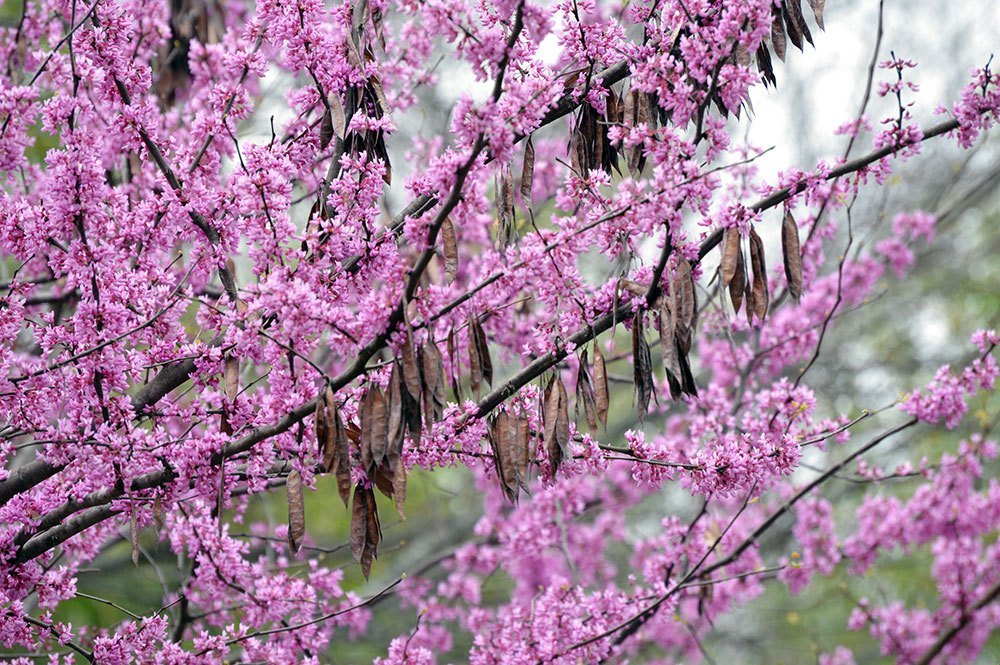The redbud, Cercis, is one of the most beautiful native trees in the eastern US. Cercis canadensis, the eastern redbud, is the one we see in the Carolinas most commonly. The tiny light purple/pink flowers (there are also white varieties) open in early spring, and are actually edible! They make an elegant garnish for salads.
The tree itself is an understory tree, like dogwoods, and stays small--about 15-35' in height, depending on the cultivar and environmental factors. They can have a single trunk or multiple trucks, and usually have a somewhat zigzag habit to their branches. There are also weeping cultivars available, such as Cercis canadensis 'Covey' and Cercis x 'Ruby Falls'. There is also a selection of leaf colors available, with the newly emerging foliage varying from green to bright golden and red to deep purple, with the leaves developing into solid green, variegated green and white, or purple later in the season. It is truly a versatile and highly attractive tree, and also attracts and supports native pollinators.
 A redbud tree at the JC Raulston Arboretum.
A redbud tree at the JC Raulston Arboretum.
Photo credit: Bob Hauver, the JCRA Photo Collection
 Newly emerging foliage on this cultivar is red, then lightens to gold and finally green. Cercis 'Rising Sun'.
Newly emerging foliage on this cultivar is red, then lightens to gold and finally green. Cercis 'Rising Sun'.
Photo credit: Jimmy Sumerrel, JCRA Photo Collection
Care and Maintenance
Redbuds should be planted in locations where they will have moist, well-drained soil, but not overly saturated. They will grow in filtered light, but look best with more access to sunlight. However, some types are prone to sunburn on the leaves if they aren't sheltered from the blazing afternoon sun. There are some fungal diseases that can cause cankers and dieback, so make sure the trees are kept healthy with adequate water, correct pruning technique, and proper mulch.
Pruning should only be done to remove dead branches, suckers or "water sprouts", or branches that cross or rub against each other, causing injury.
ID Tips
- Redbud leaves are distinctly heart-shaped with smooth edges.
- The leaves are arranged alternately along gently zigzagging branches.
- The flowers are very small and resemble sweet pea flowers, because redbuds are in the pea family. Flowers may grow on any surface of the tree, even from larger branches and the main trunk!
- After blooming, the flowers develop into pods resembling snow peas which will turn brown and eventually drop off the tree. They are not usually unsightly, as the foliage emerges right after flowering and will hide the pods.
 Flowers bloom alongside last year's pods.
Flowers bloom alongside last year's pods.
 Flowers can even bloom on the trunk of the tree.
Flowers can even bloom on the trunk of the tree.
Photo credit: Jeanne Wilkinson, JCRA Photo Collection.